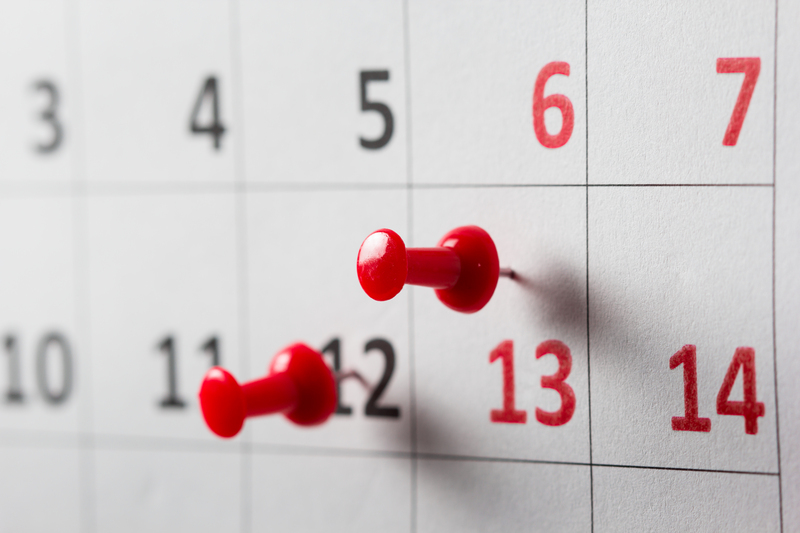The Stress Free Method for Changing Homes: Your Complete Guide
Are you planning to move to a new home? For many people, changing homes is a source of excitement and anxiety. The transition represents a fresh start, but it can also feel overwhelming with endless tasks and uncertainties. The good news is moving doesn't have to be stressful. This comprehensive article walks you through the stress free method for changing homes, packed with practical tips, expert advice, and actionable steps for a smooth relocation experience.

Why Does Moving House Cause Stress?
To create your stress free home move, it's important to understand the root causes of moving anxiety. Moving house is not just about packing and transporting your belongings. It signifies a significant life change, which brings uncertainty and a to-do list that seemingly never ends.
- Emotional attachment: Leaving familiar surroundings, neighbors, and routines can be emotionally challenging.
- Logistics complexity: From finding movers to changing your address, many moving parts require careful coordination.
- Time pressure: Juggling moving tasks with work and family commitments can lead to burnout.
- Physical demands: Packing, lifting, and organizing take a toll on your body and mind.
Despite these challenges, changing homes can be a positive and even enjoyable experience if you approach it the right way. Read on for the best stress-free moving strategies!
Planning Ahead: The Foundation of a Stress Free Move
The foundation of the stress free method for changing homes is careful planning. Much like any project, a well-laid plan prevents last-minute chaos and keeps you in control.
Start Early With a Moving Timeline
Begin planning your move 8-12 weeks beforehand if possible. Here's a sample moving timeline:
- 8-12 Weeks Before: Research and book movers, or truck rental. Declutter your home.
- 6 Weeks - 2 Months Before: Start packing non-essentials, notify schools and employers.
- 4 Weeks Before: Change your address and transfer utilities. Schedule transfer of medical and financial records.
- 2 Weeks Before: Confirm moving date with movers, pack essentials, and finalize travel plans.
- Moving Day: Pack last-minute items, supervise movers, and do a final sweep of the old home.
Pro Tip: Create a Moving Binder
A moving binder or digital folder serves as your stress-free home change command center. Keep checklists, contracts, receipts, and inventory lists all in one place. Having easy access to these documents helps reduce anxiety on the big day.
Decluttering: The Secret to a Smooth House Move
One of the most powerful stress free house moving tips is to declutter before you even begin packing. Why move items you don't need or want?
- Sort Room by Room: Focus on one area at a time to prevent overwhelm.
- Divide into Piles: Keep, Donate, Sell, Recycle, or Toss. Be honest with yourself about what you truly use.
- Simplify Packing: Fewer belongings mean fewer boxes and reduced moving costs!
- Host a Garage Sale: Turn unwanted items into extra cash for your move.
Decluttering is more than just a practical task--it's emotionally freeing. You're letting go of the old, making space for what truly matters in your new home. It's a core part of the stress free home shifting approach.
Packing Strategies for a Stress-Free Move
Packing is often the most dreaded part of changing homes. Use these techniques to make it easier and far less stressful:
Gather Packing Supplies Early
- Sturdy moving boxes in assorted sizes
- Bubble wrap and packing paper
- Packing tape and box cutters
- Markers and colored labels for sorting
- Stretch wrap for furniture
Pack Smart, Not Hard
- Label Every Box: Use large, visible markers and indicate the contents plus the room where it belongs.
- Color-Code: Assign a color to each room and use matching tape or labels. This helps movers know where to place things in your new home.
- Pack an Essentials Box: Include toiletries, medications, documents, snacks, and a change of clothes--everything you'll need immediately.
- Don't Overpack Boxes: Keep boxes under 50 lbs. to avoid injury and breakage.
- Use What You Have: Towels, sheets, and clothing can pad fragile items and save on packing materials.
Packing Room by Room
Take the process one space at a time rather than the whole house at once. This focused approach aligns with the stress free method for moving homes because it makes the task manageable and less intimidating.
Hiring the Right Moving Professionals
Should you hire a mover or DIY your move? There's no "one-size-fits-all" answer. However, reputable moving companies can make a huge difference in lowering stress if your budget allows.
How to Choose a Reliable Moving Company
- Get Referrals: Ask friends, family, or your real estate agent for recommendations.
- Read Reviews: Check online for ratings, reviews, and complaints on platforms like Google, Yelp, or Better Business Bureau.
- Verify Credentials: The company should be licensed and insured, especially for interstate moves.
- Get Multiple Quotes: Compare at least three estimates to find the best balance of cost and service.
- Understand the Contract: Review terms, cancellation policy, and whether there are extra fees for stairs, bulky items, or long carries.
Even when using professional movers, oversee the loading and unloading process to ensure your possessions are handled with care. This proactive step is essential for a stress free home relocation.
Managing Your Utilities and Address Changes
One common source of moving day headaches is discovering you forgot to transfer utilities--or your internet won't be installed for a week. Stay stress free by scheduling these changes in advance.
Checklist for Changing Address & Transferring Services
- Utilities: Electric, water, gas, and trash collection
- Internet and cable providers
- Mail forwarding through the post office
- Schools and daycare facilities
- Banks and financial institutions
- Doctors, dentists, and vet offices
- Subscription services (magazines, food deliveries, etc.)
Update your address with key contacts to ensure a seamless transition. Automating these tasks removes stress so you can focus on the move itself.
Taking Care of Yourself During Your Move
It's easy to neglect your own needs while changing homes, but self-care is part of a truly stress free move. Relocating is physically and emotionally demanding, so prioritize your health.
- Stay Hydrated: Moving involves a lot of activity, so keep water handy.
- Eat Nutritious Meals: Healthy snacks and balanced meals fuel you for long moving days.
- Rest Often: Schedule regular breaks to avoid exhaustion.
- Ask for Help: Don't try to do it all alone--enlist friends, family or hire professionals.
Mental health matters during this time. Allow yourself grace if feelings of nostalgia or anxiety surface. Keeping routines, such as morning coffee or evening walks, offers a sense of normalcy. Reaching out to a support system also minimizes stress.
Tips for Moving With Children or Pets
When you're not moving solo, a stress-free home move involves extra planning:
For Children:
- Explain the move in advance using age-appropriate language.
- Keep familiar items handy (favorite toys, blankets).
- Stick to regular routines as much as possible.
- Let them participate by packing a box for their new room.
- Plan playdates or activities for moving day.
For Pets:
- Update microchips and collars with your new address.
- Keep pets in a quiet, secure room during packing and loading.
- If possible, arrange pet-sitting for moving day.
- Plan transportation with familiar bedding and toys to reduce anxiety.
Settling Into Your New Home - Stress Free
Congratulations, the hardest part is over! Now it's time to make your new house a home. These final steps help you adjust and thrive:
- Unpack Essentials First: Set up bedrooms, bathrooms, and kitchen for comfort and function.
- Take Your Time: Unpack at your own pace. Don't rush to organize everything immediately.
- Explore Your Neighborhood: Locate grocery stores, parks, pharmacies, and meet your neighbors.
- Personalize Your Space: Hang photos, display favorite decor, and introduce comforting scents.
- Celebrate Your New Beginning: Order takeout, invite friends over, and make new memories!
Common Mistakes to Avoid For a Stress-Free Relocation
Even with the best intentions, certain pitfalls can make your move more stressful. Here's what to avoid:
- Waiting until the last minute to start packing
- Not labeling boxes properly
- Forgetting to book movers or rentals ahead of time
- Underestimating the amount of stuff you have
- Neglecting self-care and rest
- Overpacking boxes (risking injury or breakage)
Anticipating these potential problems is part of the stress free method for changing homes. A little foresight goes a long way!

Frequently Asked Questions: Stress Free Home Moves
How far in advance should I start preparing for a move?
Ideally, you should start preparing 2-3 months before your moving date. This provides time to declutter, pack, and arrange all logistics for a seamless and stress free moving experience.
What is the best way to stay organized during a move?
Create checklists, schedules, and keep all essential documents in one place--Paper or digital. Use colored labels and an inventory sheet to keep track of every box.
Is it worth hiring professional movers for small moves?
Even small moves can benefit from professionals, especially if you are tight on time, have heavy items, or want to minimize stress. Research local movers offering flexible options.
Conclusion: Embrace the Stress Free Method for Changing Homes
Changing homes doesn't have to include chaos! With proactive planning, smart packing, and self-care, you can transform your move into an empowering new chapter. Remember, a stress free move is all about breaking tasks down, asking for help, and making your well-being a priority. Use this guide to make your home transition smooth, organized, and yes--enjoyable!
Happy moving! Your new adventure awaits.